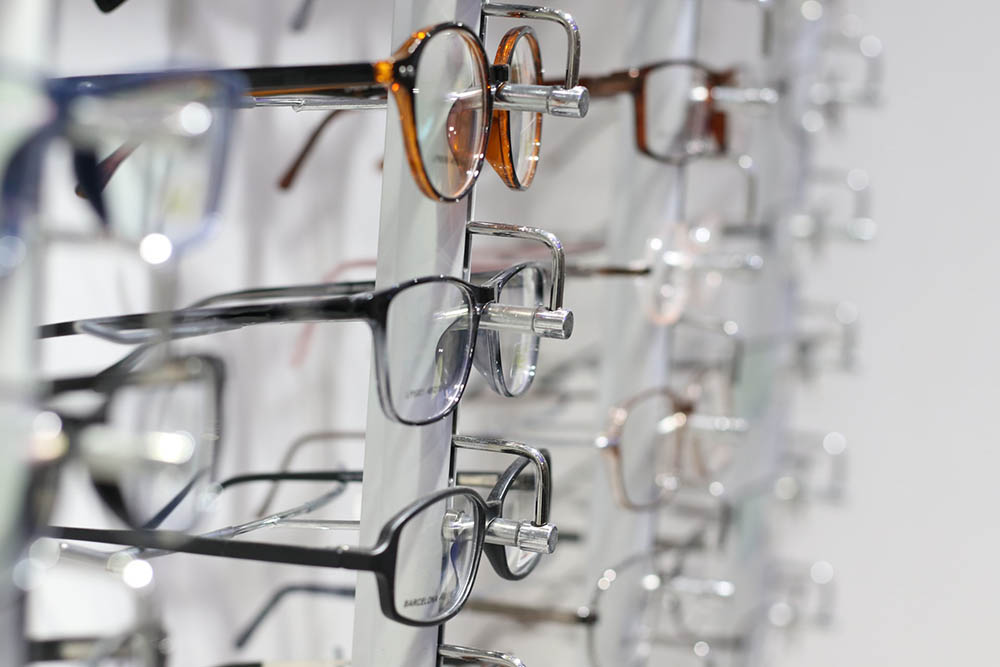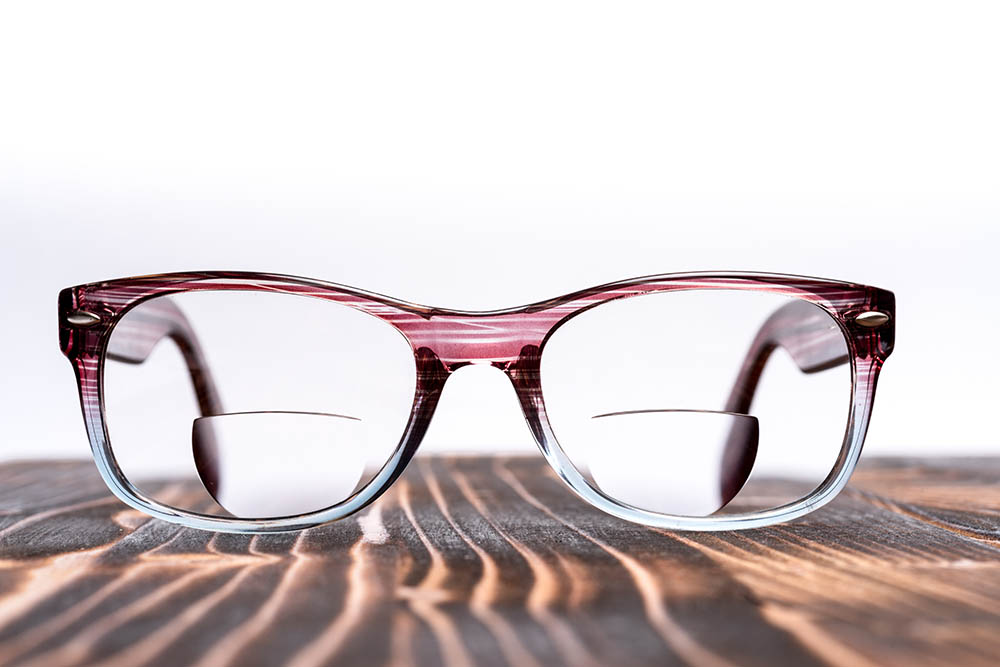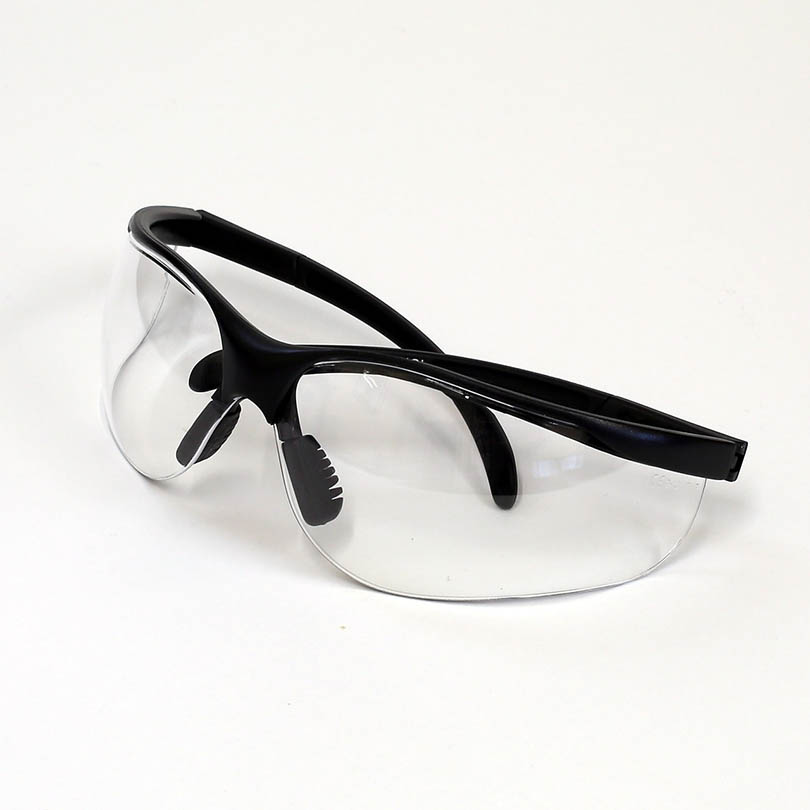20 Interesting Facts About Glasses You Never Knew (2024 Update)
Last Updated on

People wear glasses for various reasons. Some wear them to correct their vision, others to protect their sensitive eyes, and some just want to look good! And while those reasons are important, it’s the evolutionary process that these glasses had to go through that fascinates us the most.
We’d like to share a few facts about glasses that we’re sure you’ll find fascinating. Let’s dive in.

Top 20 Facts About Glasses
1. Glasses were invented in 1000 A.D
Honestly, we don’t know who invented the first glasses. But, according to historians, the Romans were the first people to discover that glass had properties that are useful when it came to reading small texts. That discovery led to the invention of the magnifying glass, using spheres. Also, back then they were called a “reading stone,” and not glasses.
https://www.instagram.com/p/BxmXnzNCmrX/
2. It was in Italy that the first wearable glasses appeared
This was in the 13th century. We never got the chance to see people wear them, but thanks to Renaissance paintings we know they existed at the time. In the paintings, you get to see different scholars reading various scripts using perch-style glasses or handheld frames.
3. During the Renaissance, glasses were a symbol of intelligence
Scholars who lived during the Renaissance time were revered by society. Most of them had eyesight problems—probably due to excessive reading—and needed glasses. That’s why nearly everyone associated glasses with intelligence, wealth, and property.
4. The ‘Martin’s Margins’ are named after the inventor
The Margins are the brainchild of Benjamin Martin. He was an ordinary instrument maker living in London at the time and is now considered to be one of the first inventors of modern glasses. Martin’s Margins have dark rims meant to improve user vision, as well as protect them from excessive light. The frames are silver in color, and the lenses are round.
5. Benjamin Franklin also contributed to the development of glasses
Many people don’t know this, but Benjamin Franklin—one of the founding fathers of the United States—invented the bifocal lens. These lenses made it possible for individuals who grapple with both myopia and hypertropia to see using only one pair of glasses. All he had to do was cut the different lenses in half and fix them in a single frame.

6. Sunglasses were invented in the 12th century
They weren’t invented in the 20th century as previously thought. These accessories came into existence in the 12th century, and they were invented by the Chinese. Their purpose at the time was to obscure the judges’ eyes while they were in court listening to cases and passing judgments.
7. Tinted sunglasses were designed for medical conditions
These were originally fashioned to help people who had eyes that were too sensitive to light. But because they were so effective at reducing glare, manufacturers in the 1900s saw this as an opportunity to ramp up production and make more profit by selling to the general public.
8. We were introduced to plastic lenses in the 1980s
Technology helped us find a way to make lenses lighter and thinner. Plastic lenses are less breakable and have various coatings that were added in layers to reduce UV light and glare. The only problem with this new invention is how prone it is to scratches.
9. “Spectacles” is a word derived from Latin
Around the 18th century, people started calling glasses “spectacles”. Spectacle is a derivative of “spectare,” which is a Latin word that translates to “to look at” or “to observe.” Some countries still prefer calling them glasses or eyeglasses, but others have adopted the spectacle name.

10. Approximately 4 billion people wear glasses
As per the records obtained from the Vision Council of America, 64% of the world’s population wear glasses, and 75% use products designed to improve vision. In this country alone, 49.7 million people own more than one pair of prescription glasses.
In terms of gender, more women wear eyeglasses in comparison to men. 207 million keep wearing non-prescription sunglasses and 28 million rely on over-the-counter reading glasses. At least a third of the people who’ve worn eyeglasses have been plagued by astigmatism.
11. Developed economies are adversely affected by myopia
Researchers have reiterated that overreliance and addiction to smartphones, tablets, and personal computers have significantly contributed to the deteriorating state of affairs. They’ve used data collected over a 20-year period to project what the situation will be like in the near future. Safe to say, their findings weren’t flattering at all.
In one of the studies published in Ophthalmology, two-thirds of the population in Asia-Pacific and East & South East Asia will be myopic by 2050. The problem will also be prevalent in other regions such as Australia, Western Europe, and North America.
12. Glasses can improve vision permanently
These cases are rare, as the only time it’s possible is when the individual in question has amblyopia or strabismus.
Strabismus is classified as a disorder that affects how a person’s eyes line up. They never line up in the same direction, thereby making them look as though they are crossing each other. Hence, the name “crossed eyes.” Known causes include developmental issues with the brain’s control center, nerves that are responsible for transmitting information back to the muscles, and general health conditions.
Amblyopia is commonly known as the “lazy eye.” It’s basically a reduced vision in an eye, often caused by unusual visual development. The eye that’s ‘lazy’ will wander inwards or outwards.

13. There’s more than one type of glasses
In total, there are nine different types of glasses, and they all serve varied functions. The ones that we’re used to seeing people wear are the monovision lens glasses (single vision), prisms glasses, progressives, bifocals, toric glasses, and trifocals. Then we have the sunglasses, safety glasses, and the digital blue-light blocking glasses.
14. Not all lenses are made of glass
Contrary to popular belief, glass lenses aren’t the best lenses. They are weighty, costly, and could easily crack or shatter. Of course, they are the best if we’re talking about appropriate lenses for visual acuity, but the cons outweigh the pros.
We now have safer, cheaper, and lighter options, if you’re tired of using glass lenses. One is the plastic lens that we talked about earlier on, and the others include polycarbonate and trivex lenses. The polycarbonate material is common in sports goggles, while trivex is used in high-risk environments.
15. Wearing a different prescription can damage your eyes
Some people believe that wearing somebody else’s glasses for a couple of minutes will permanently damage an individual’s eyes. But there’s no evidence supporting this. If you inadvertently wear a prescription not meant for you, the only thing you’ll experience is the headaches caused by eye strain or eye fatigue. The strain and fatigue are expected, as glasses are designed to correct refractive errors.
However, if you wear them for an extended period, that’s a different story.
16. Safety glasses are also common glasses
Some would even go as far as saying that they are the most important type of glass, seeing as they are designed to protect the eyes of people working in environments that can permanently blind them. You’ll mostly see them being worn by heavy machinery operators and lab technicians.

17. The power of an eyeglass is measured in diopters
This measurement is vital in determining the lens’s magnification level, with respect to the individual’s requirements. How strong or weak your glasses are will be evaluated using the diopter. If the number is lower than expected, the strength and magnification levels will be lower as well.
18. It’s okay to wear glasses 24/7
There’s nothing wrong with wearing your glasses all the time. Your eyesight won’t deteriorate or change in any way. Glasses are meant to help you see clearly, even if they are prescriptions. Trying to avoid wearing them is definitely not advisable, though, as you’ll struggle to focus and eventually develop migraines.
19. Dim lights don’t cause eyesight damage
You can study under dim lights for as long as you want. There’s no study in any field that has managed to prove that low lighting has the potential to damage your eyesight. Your eyes might get tired at some point, but other than that, there’s really nothing serious to worry about.

20. Glasses can be an indicator of the superhero syndrome
Otherwise referred to as the savior complex, the superhero syndrome is a phrase used to describe an individual who always wants to be a hero regardless of how dire the situation is. Even if they are outnumbered or the odds are against them, they still want to be the one saving the day.
In their heads, they believe they have to wear glasses to conceal their ‘true’ identity. Sort of like Clark Kent in the movie Superman.

Conclusion
Did you find these facts fascinating? We would like to know because they taught us a lot about the history and the strides made to ensure the glasses that we wear today are of premium quality. Some of these facts were shared by our readers, so if you have something new to add, feel free to reach out.
Featured Image Credit: Harpreet Singh, Unsplash
Table of Contents
- Top 20 Facts About Glasses
- 1. Glasses were invented in 1000 A.D
- 2. It was in Italy that the first wearable glasses appeared
- 3. During the Renaissance, glasses were a symbol of intelligence
- 4. The ‘Martin’s Margins’ are named after the inventor
- 5. Benjamin Franklin also contributed to the development of glasses
- 6. Sunglasses were invented in the 12th century
- 7. Tinted sunglasses were designed for medical conditions
- 8. We were introduced to plastic lenses in the 1980s
- 9. “Spectacles” is a word derived from Latin
- 10. Approximately 4 billion people wear glasses
- 11. Developed economies are adversely affected by myopia
- 12. Glasses can improve vision permanently
- 13. There’s more than one type of glasses
- 14. Not all lenses are made of glass
- 15. Wearing a different prescription can damage your eyes
- 16. Safety glasses are also common glasses
- 17. The power of an eyeglass is measured in diopters
- 18. It’s okay to wear glasses 24/7
- 19. Dim lights don’t cause eyesight damage
- 20. Glasses can be an indicator of the superhero syndrome
- Conclusion
About the Author Robert Sparks
Robert’s obsession with all things optical started early in life, when his optician father would bring home prototypes for Robert to play with. Nowadays, Robert is dedicated to helping others find the right optics for their needs. His hobbies include astronomy, astrophysics, and model building. Originally from Newark, NJ, he resides in Santa Fe, New Mexico, where the nighttime skies are filled with glittering stars.
Related Articles:
How to Clean a Refractor Telescope: Step-by-Step Guide
How to Clean a Telescope Eyepiece: Step-by-Step Guide
How to Clean a Rifle Scope: 8 Expert Tips
Monocular vs Telescope: Differences Explained (With Pictures)
What Is a Monocular Used For? 8 Common Functions
How to Clean a Telescope Mirror: 8 Expert Tips
Brightfield vs Phase Contrast Microscopy: The Differences Explained
SkyCamHD Drone Review: Pros, Cons, FAQ, & Verdict
